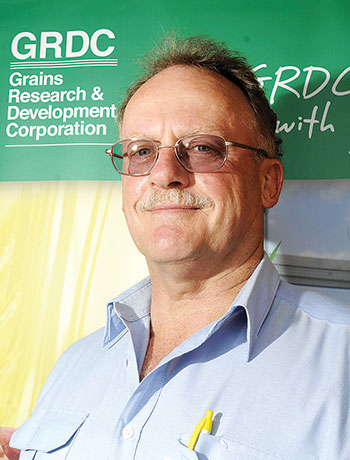Key points
- Deep-banded phosphorus and potassium help to drought-proof northern soils’ nutrient supply
- Both nutrients are immobile in the region’s clay soils and long-term research reinforces the need to address declining soil fertility
- With complex and contrasting phosphorus behaviours being found in similar soils, deep banding offers the best balance between contrasting chemical reactions and root access
- Comprehensive research over time has created data on the ‘ins and outs’ of deep placement
Deep banding helps ‘drought-proof’ northern soils’ nutrient supply, with long-running research continuing to illustrate how important this practice is in addressing declining soil fertility.
The University of Queensland’s Professor Mike Bell has led many research projects over the years. The soil fertility expert says the deep banding of phosphorus and potassium tackles two issues – the immobility of these nutrients in clay soils and the region’s reliance on stored soil moisture. “When crops dig deep for moisture, they also need to find nutrients.”
 The University of Queensland’s Professor Mike Bell. Photo: GRDC
The University of Queensland’s Professor Mike Bell. Photo: GRDC
Professor Bell says it is not surprising that subsoil depletion has occurred. “The question has been what to do about it.”
Although his team’s latest research has unveiled the complex and contrasting behaviours of phosphorus in soils with apparently similar characteristics, it still points to deep banding as providing the best balance between contrasting chemical reactions and root access.
Deep banding solutions
For more than a decade, growers, agronomists and researchers from the university and the Queensland Department of Agriculture and Fisheries have been assessing deep banding in GRDC-supported projects.
On sites south of Narrabri to the north of Emerald, a large pool of data on placement depth and application rates has been created, some of which is reported here.
Depth of placement
The most significant depletion of profile phosphorus and potassium is in the soil layers immediately below the topsoil at the 10 to 30-centimetre layer.
These layers avoid the most severe and prolonged drying that occurs in the topsoil and are still close enough to the soil surface to have a high root density, essential for the efficient uptake of less-mobile nutrients such as phosphorus and potassium.
Deep placement strategies target the middle and bottom half of this layer.
Band spacing
Professor Bell says there is little difference between bands spaced 25 to 50cm apart, but the efficiency of crop phosphorus access and yield responses decline at wider spacings.
Although optimal spacings are similar for phosphorus or potassium, crops do not proliferate roots around potassium bands, so the co-application of phosphorus is required to maximise crop potassium uptake.
Product formulations
There is no advantage to using fluid forms of phosphorus fertiliser compared with conventional granular products, but ammonium phosphates (MAP and DAP) are clearly superior to mono-calcium phosphate (Triple Super) when applied in bands.
Application rates
Professor Bell says deep applications are typically done infrequently to minimise disruptions and costs.
Rates should be enough to maximise the crop response in each year, as well as provide responses over four to five crop seasons.
“Results suggest that while application of 20 kilograms of phosphorus per hectare and 50kg of potassium/ha can maximise yield responses in the initial cropping season or two, an increasing advantage is observed from higher phosphorus rates – typically 40kg/ha – in later seasons.”
Also, potassium reapplications will be needed more frequently than phosphorus because of potassium’s greater crop uptake and redistribution into topsoil layers in residues.
Reapplication timing
Professor Bell says when to reapply is a complex question. “There are differences in soil properties that influence the availability of applied phosphorus in soil over time. There is uncertainty about how much phosphorus and potassium are actually taken up from deep bands.
“And there is growing evidence that reapplication in different positions to the residual bands can provide another level of nutrient uptake and grain yield, probably due to the larger volume of treated soil allowing more roots to encounter available phosphorus.”
Additionally, budgeting for removal and soil testing to detect residual deep bands are both ineffective, with the latter compromised by an inability to sample the widely spaced bands in a predictable fashion.
“So, we currently suggest a combination of monitoring plant nutrient status via tissue tests and using reapplication test strips. These are the most practical tools to determine the time to reapply. The responses obtained to the initial applications and the cost of fertiliser will also factor heavily in these decisions.”

























































